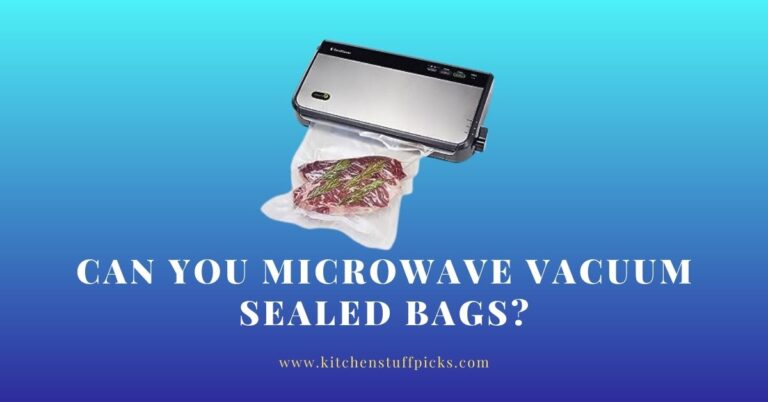Can You Microwave Mason Jars? Safe or Risky?
Microwaves have changed the way we prepare and heat our food. However, there is always the question of whether particular containers, such as mason jars, can be microwaved safely. Although they offer quick and simple solutions for busy individuals and families, there is still the matter of whether some containers can be microwaved at all. This comprehensive guide to microwaving mason jars covers safety, proper use, and best practises.
The Safety of Microwaving Mason Jars
When utilising any kitchen device, safety should always come first, and microwaving mason jars is no exception. Mason jars are well-known for their versatility and storage capacity, however they are generally intended for canning and preserving rather for microwave use. The main issue with microwaving mason jars is that they are made of glass.

Understanding the Risks of Microwaving Mason Jars
Glass containers can shatter when subjected to high heat and pressure, especially if they are not heat-resistant or microwave-safe. When you microwave a mason jar, the contents can heat unevenly, resulting in the formation of steam and pressure. This pressure could cause the jar to burst, endangering you and your microwave.
Choosing the Right Mason Jar for Microwave Use
If you’re determined to use mason jars in the microwave, you must first select the correct sort of jar. Not all mason jars are the same, and some are more suited for microwave use than others. Here are some things to think about:
Material and Quality
Look for mason jars that are labelled microwave-safe or “heat-resistant.” Tempered glass, which is more durable and less prone to shattering at high temperatures, is typically used to make these jars.
Size and Shape
Choose mason jars with straight sides over those with curved or slanted edges. Straight-sided jars provide consistent heating and reduce the possibility of pressure buildup.
Lid Compatibility
Make sure the lid or cover you’re using for the microwave is also microwave-safe. Remove any metal lids or rings before microwaving to avoid sparking and damaging the microwave.
Related Post: How Hot does a Microwave Get?
Removing Metal Lids and Rings
Always remove any metal lids or rings from a mason jar before attempting to microwave it. Metal is extremely dangerous when microwaved. Metal can create sparks and fires when exposed to microwaves, causing damage to both the microwave and the container.
Safely Replacing the Metal Lid
To avoid any mishaps, replace the metal lid with a microwave-safe cover or cover the jar’s opening with a microwave-safe plate. This precaution will allow steam to escape while retaining the container’s integrity.
Preparing the Mason Jar for Microwave Use
It is critical to carefully prepare the mason jar to reduce the chance of mishaps and to ensure a better microwaving experience. Before you put the jar in the microwave, do the following:
Step 1: Clean the Jar Thoroughly
Make sure the mason jar is clean and clear of any food residues on the inner walls before microwaving. Residues can cause uneven heating and impair food flavour.
Step 2: Add Liquid Contents Carefully
If you’re microwaving any liquid in the mason jar, leave enough headroom to allow for liquid expansion while it heats. This headspace will keep spills at bay and the contents consistent.
Step 3: Remove the Lid
If you’re using a microwave-safe cover, make sure it’s loosely put on top of the jar. This allows steam to escape, lowering the pressure inside the jar.
Step 4: Avoid Overheating
Microwave in brief bursts and stir the contents between heating to achieve even heat distribution. Overheating can cause unexpected reactions as well as uneven cooking.
What Foods Can You Microwave in Mason Jars?
Mason jars are versatile containers that can be used to microwave a range of meals. Some popular choices are:
1. Soups and Stews
Soups and stews reheat beautifully in Mason jars. When compared to plastic containers, glass retains heat effectively and keeps your soup warm for a longer period of time.
2. Oatmeal and Cereals
Microwave your muesli or cereal in a mason jar for a quick and easy breakfast. Just make sure you add enough liquid to avoid overflow and get the desired consistency.
3. Beverages
Mason jars are a great way to warm coffee, tea, or hot chocolate in the morning. They’re a cute and natural way to serve your favourite hot drinks.
4. Single-Serving Meals
Mason jars are ideal for preparing single-serving meals that can be prepared in the microwave. Mason jars are dishwasher safe. For a quick and tasty meal, make personalized quantities of pasta, rice dishes, or casseroles.
Safety Precautions When Microwaving Mason Jars
While it is feasible to use mason jars in the microwave, various safety precautions must be followed to minimize dangers and provide a safe cooking experience:
1. Avoid Rapid Temperature Changes
Never place a hot mason jar on a cold surface, such as a counter or sink. Due to thermal shock, a fast shift in temperature can cause the jar to split or shatter.
2. Use Microwave-Safe Covers
To avoid mistakes, only use covers that are clearly labeled as microwave-safe. Microwave-safe lids allow steam to escape while keeping the contents in place.
Related Post: Is Stoneware Microwave Safe?
3. Examine for Damage
Before microwaving, check the mason jar for apparent cracks, chips or damage that could jeopardise its integrity. To avoid mishaps, throw away any damaged jars.
4. Don’t Overfill the Jar
Allow enough space in the jar to allow for growth and to prevent spills. Overfilling the microwave might result in a sloppy mess and uneven heating.
Conclusion
Finally, if done properly, microwaving mason jars can be both safe and convenient. Using microwave-safe jars, removing metal lids, and following proper preparation measures are all necessary for a successful experience. Mason jars are the perfect vessel for reheating a wide variety of foods and adding a decorative flourish to the presentation of your dishes at the same time. When using mason jars in the microwave, always put safety first.
While mason jars are good for specific microwave usage, keep in mind that they are not intended for extended microwaving or high heat exposure. Avoid using mason jars for tasks that are not designed for them, such as long-term cooking or pressure canning. If you follow the instructions in this article, you will be able to enjoy the simplicity and adaptability of microwaving with mason jars.
You may confidently and safely use mason jars into your microwave cooking routine by following safety practises and being aware of potential concerns. Remember that the fun of microwave cooking with mason jars comes not only from the tasty meals, but also from the charm and nostalgia these vintage containers offer to your kitchen. Enjoy your delicious and convenient microwave dinners, and happy cooking!
FAQs
Can you microwave mason jars?
Yes, you can microwave mason jars, but you must exercise caution. Mason jars are composed of glass and can be heated in a microwave, but special precautions must be taken to assure safety.
What type of mason jars are safe for microwaving?
Only “microwave-safe” or “heat-resistant” mason jars are microwave-safe. Thermal stress can crack glass mason jars, posing a risk.
How should I prepare the mason jar for microwaving?
Before microwaving, make sure to remove any metal components, including the lid and bands, as metal should never be placed in a microwave. In addition, make sure the jar is spotless and devoid of any traces of food or other potential pathogens.
Can I microwave mason jars with liquids or foods?
Mason jars can be used in the microwave, but only with caution when heating liquids or meals. The pressure within the jar could explode if there wasn’t enough room for it to grow. To avoid hotspots while microwaving, stir or shake liquids beforehand.
Are there any time and power level recommendations for microwaving mason jars?
In order to avoid overheating or thermal shock while microwaving mason jars, it is recommended to choose a power level between low and medium. If the manufacturer has supplied instructions, be sure to read and implement them. In case of uncertainty, microwave for shorter times and check the contents of the jar frequently to avoid any mishaps.






